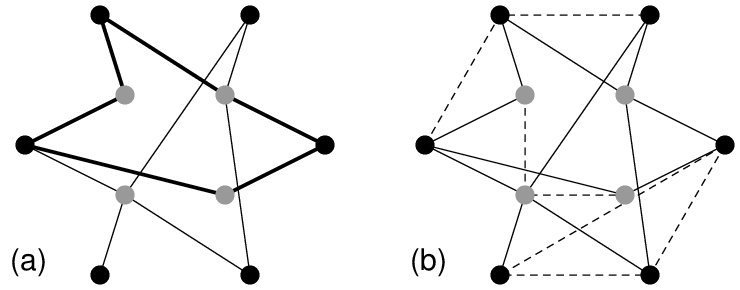NANOSYSTEMS: PHYSICS, CHEMISTRY, MATHEMATICS, 2018, 9 (2), P. 196–205
The Lieb–Mattis theorem revisited
W. Florek – Adam Mickiewicz University, Faculty of Physics, ul. Umultowska 85, 61-614 Poznań, Poland; wojciech.florek@amu.edu.pl
Simple formulation and a straightforward proof of the Lieb–Mattis theorem (LMT) do not indicate how powerful a tool it is. For more than fifty years, this theorem has been mainly discussed in its ‘strong’ form and applied mainly to many type of infinite spin lattices. It can be easily proved that in such cases, geometrically frustrated systems have to be excluded. However, it has been recently shown that the so-called ‘weak’ or general form of the LMT can be exploited considering some small, geometrically frustrated quantum spin systems. Moreover, many systems, which do not satisfy assumptions of the LMT, show identical features, including the level order characteristic for bipartite spin systems. It yields a question about possible generalizations or modifications of this theorem to involve a larger class of problems. To begin, algebraic aspects have to be understood with the invaluable role of the Perron-Frobenius theorem. The latter theorem is investigated, discussed, modified etc. in immense number of works. Many of them are important in physical applications and ways of reasoning they present can be exploited in different approaches to the LMT.
Keywords: quantum spin systems, Lieb–Mattis theorem, level order, ground state properties.
PACS 75.10.Jm, 75.50.Xx, 03.65Aa, 03.65.Fd
DOI 10.17586/2220-8054-2018-9-2-196-205
